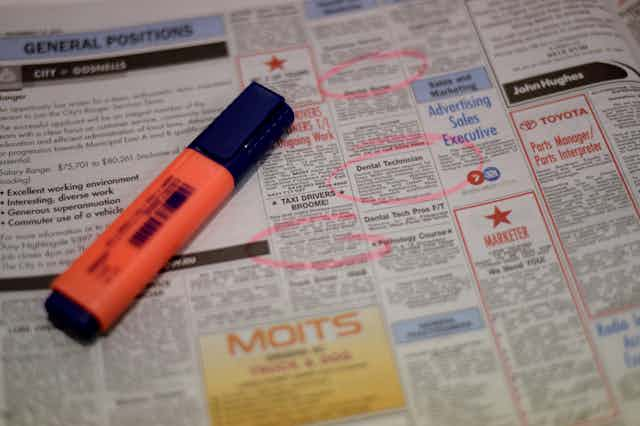While many different views will be expressed about the benefits of increasing or reducing flexibility to engage casuals, one indisputable fact is that the level of casual employment has not increased in Australia for the past 18 years. ABS statistics show that it remains at 20% of the workforce, the same level as it was in 1998. – Australian Industry Group (Ai Group), media release, March 13, 2016
Changing work patterns are back in the headlines, with unions calling on the Fair Work Commission to consider new rules to convert casual employees into permanent staff after six months of working for the same employer.
The Australian Industry Group (Ai Group), which represents employers, has argued against the move, saying that the level of casual employment has not increased in Australia for the past 18 years.
Is that right?
Checking forms of employment data
When asked for a source to support the assertion, a spokesperson for the Ai Group referred The Conversation to a document the group produced using a mix of data from the Australian Bureau of Statistics (ABS). The document, titled Casual employment in Australia: numbers and trends, said:
In August 1998, the ABS identified 1,681,700 people as casual employees, or 20.1% of the workforce.
In November 2015, the ABS identified 2,396,500 people as casual employees, or 20.1% of the workforce.
The ABS, however, does not calculate a specific “casualisation” rate. Rather, the casual employment share has to be inferred from data on the proportion of employees (excluding business owner managers) who don’t get paid annual leave and sick leave entitlements. This is a commonly used proxy measure of casual employment.
In its submission to the Fair Work Commission, the Ai Group refers to the ABS Forms of Employment Survey. That survey, a supplement to the monthly Labour Force Survey, was held every few years between 1998 and 2013.
It showed that, in 1998, the share of all employed persons who were employees without paid leave entitlements was 20.1%.
ABS release number 6105.0, Australian Labour Market Statistics, also looks at the proportion of employed people who are employees without paid leave entitlements. The October 2004 release for that data set has the figure at about 19.8% for 1998.
The most recent Forms of Employment Survey data available, from November 2013, estimated that 19.4% of all employed people were employees without paid leave entitlements.
And what happened to the casual employment rate between 1998, when the Forms of Employment Survey began, and 2013 when it ended? The short answer is not much; it hovered around 19% or 20% throughout this period.
In other words, the ABS Forms of Employment Survey data support Ai Group’s assertion that the rate of casual employment has remained stable in recent years.
Checking more recent data
The ABS stopped doing the Forms of Employment Survey in 2013, but it has long collected data on the presence of paid leave entitlements in the August month of the Labour Force Survey.
These numbers are now published in spreadsheets as part of the detailed quarterly release of Labour Force Survey data.
According to the most recent estimates, for November 2015, there are 2,396,500 employees without paid entitlements. Given a total pool of 11,919,100, that implies a casual employment share of 20.1%.
The Household, Income and Labour Dynamics in Australia (HILDA) Survey, which commenced in 2001, also asks its respondents about whether they receive paid sick leave and paid annual leave. In addition, HILDA respondents are asked whether they would describe their employment arrangements in their main job as casual.
On both measures, the HILDA Survey data show a rise in the share of casual employment in total employment between 2010 and 2014 – however, it is still no higher in 2014 than it was in 2001.
Indeed, the casual employment shares are both about half a percentage point lower in 2014 than in 2001.
Casual work is more pervasive than in the past
But surely casual employment is much more pervasive now than in the past?
This is true, but all of the growth occurred prior to the late 1990s.
Unfortunately, the earliest data we have only goes back to 1984 (which labour market academics Peter Dawkins and Keith Norris wrote about in their paper Casual employment in Australia, published by the Australian Bulletin of Labour in 1990).
But the data we do have show that the casual employment share grew by a whopping 70% between 1984 and 1998; since that time it has fluctuated around the 20% mark.
Verdict
The Ai Group is correct. Its assertion that the level of casual employment has not increased in Australia for the past 18 years is supported by ABS data. – Mark Wooden
Review
This is a fair analysis. The overall trend is that the share of casual employment in Australia has remained relatively stable since the late 1990s. – Sue Richardson

